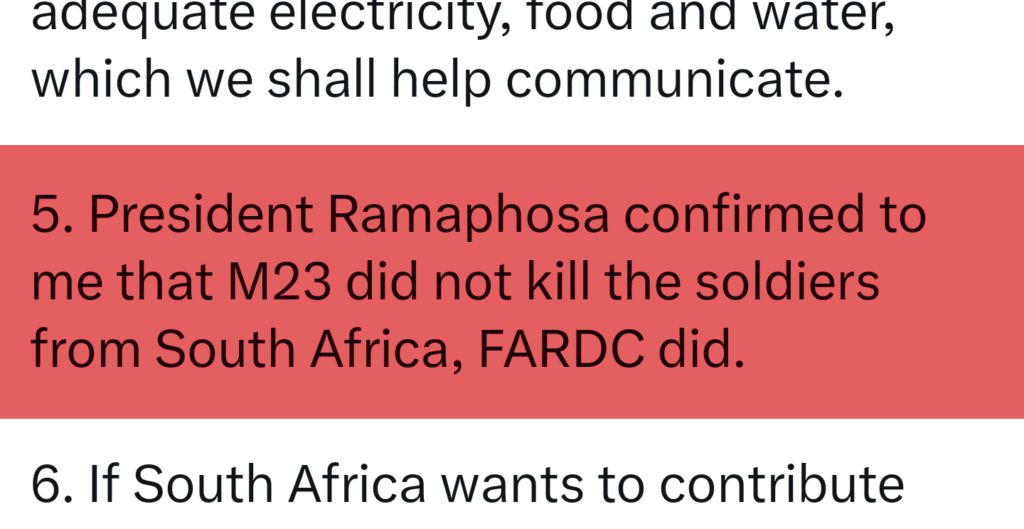Kagame Refutes Claims of Rwandan Ties to M23 Amid Escalating Conflict
As the battle for control over Goma intensifies between the Armed Forces of the Democratic Republic of Congo (FARDC) and the M23 rebel group, Rwanda once again finds itself accused of backing the M23—a claim that Rwandan President Paul Kagame has firmly denied.
For years, Rwanda has hosted hundreds of thousands of Congolese refugees fleeing violence in the DRC. Kagame’s administration has provided a safe haven for these displaced individuals, yet this humanitarian effort has fueled allegations from Western media and regional governments that Rwanda is directly involved in the M23’s military campaign against the Congolese government.
Clashes in Goma and Rising Regional Tensions
In a recent battle in Goma on the 27th of January 2025, South African National Defence Force (SANDF) troops, deployed under the Southern African Development Community (SADC) mission, suffered casualties. Reports indicate that 11 South African soldiers were killed in the clashes, triggering widespread outrage in South Africa. Many on social media and in political circles were quick to blame Rwanda, assuming that the M23 was responsible for the attack.
However, new revelations suggest otherwise. President Kagame recently addressed these accusations, clarifying that South African President Cyril Ramaphosa personally confirmed that M23 was not responsible for the deaths of the SANDF soldiers. In a statement posted on X (formerly Twitter), Kagame wrote:
“President Ramaphosa confirmed to me that M23 did not kill the soldiers from South Africa—FARDC did.”
I held two conversations this week with President Ramaphosa on the situation in Eastern DRC, including earlier today. What has been said about these conversations in the media by South African officials and President Ramaphosa himself contains a lot of distortion, deliberate… https://t.co/i78aqtVjpr
— Paul Kagame (@PaulKagame) January 29, 2025

The Role of FARDC in the Conflict
FARDC, the national military of the DRC, has long been accused of human rights violations, corruption, and collaboration with armed militias such as the FDLR. The FARDC’s involvement in civilian displacement and indiscriminate attacks has fueled resentment among local populations, many of whom have welcomed the M23’s recent advances.
Shifting Perceptions and the M23’s Growing Support
The recent turn of events could significantly shift public opinion regarding the M23’s role in the region. The rebel group has reportedly captured several Romanian mercenaries working alongside the FARDC without executing them—an act perceived as a demonstration of discipline and restraint. Additionally, viral footage has surfaced showing crowds in Goma celebrating the M23’s control over the city, further complicating the prevailing media narratives that frame the group solely as aggressors.
As the situation unfolds, regional and international actors face mounting pressure to reassess their stance on the conflict. With Kagame distancing Rwanda from the M23, and new evidence pointing toward FARDC’s responsibility for key battlefield incidents, the narrative surrounding the battle for Goma is rapidly evolving.
Would you like me to add further details, such as international responses or historical context?











